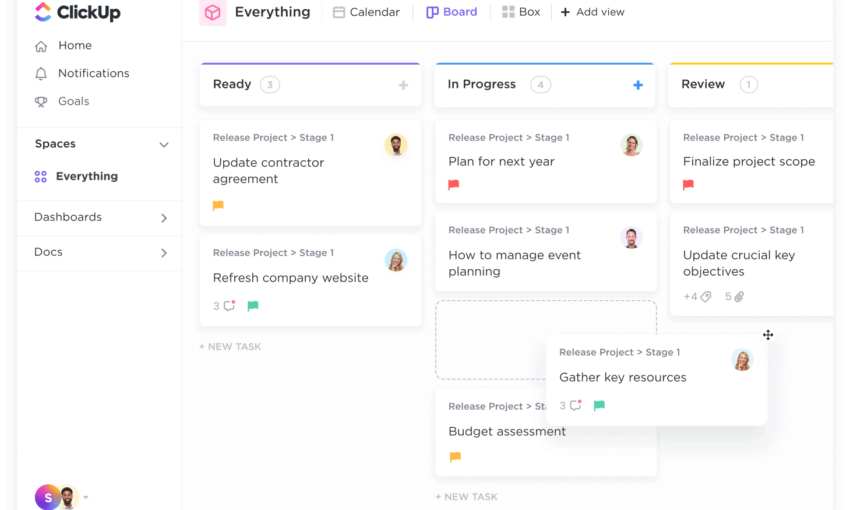They say that “the customer is always right”. And while that may be true (most of the time), it certainly doesn’t mean that we have to bend over backwards for them in every instance. I should know, as I spent years attempting to contort myself to fit whatever clients wanted.
One area that is particularly tough to manage is when it comes to our process for getting things done. If you deal with multiple clients, each one of them has their own distinct way of working. Some are night owls and feel the need to send email when the moon is out. Others expect a lot of in-person meetings – something difficult for a busy web designer to fit into their schedule.
Trying to accommodate each and every client’s way of working often leads to chaos. It makes getting things done more difficult and will leave you scrambling to find some level of consistency in your workflow.
Sound terrible? Sound familiar? If you’re banging your head against the wall, know that change is possible! Let’s take a look at some ideas for getting clients to work in a way that benefits you.
The Freelance Designer Toolbox
Unlimited Downloads: 500,000+ Web Templates, Icon Sets, Themes & Design Assets
All starting at only $16.50 per month
Create Processes That Work for You
During the early part of my career as a freelancer, I really had no process for getting things done. That is, unless you count waking up and walking over to the home office. There wasn’t any real organization to speak of and I haphazardly went back-and-forth between tasks. Sort of like a single-player game of table tennis.
Not only that, I was often running out to meetings and taking a seemingly endless number of phone calls. This led to a lot of stress, and a pile of work that I couldn’t seem to get through. Eventually, I realized that a change was needed.
So, I started putting some processes in place. Each one acts as a bit of a boundary for both my clients and myself. They’re not perfect, but have produced some positive results. Among them:
Limit Meetings
I now avoid going out to meetings when possible, and they are usually reserved for higher-revenue clients. As most of my clients are based at least a half hour from my office, I found that, when accounting for travel, even a short meeting tended to take up several hours of work time. Replacing meetings with phone calls or video chats (which I limit to specific hours) has saved a ton of time, while keeping the lines of communication open.
Reserve Time for Each Task
Understandably, clients tend to want things done “as soon as possible”. At the same time, it’s not always possible to drop everything you’re doing (something I tried and struggled with). So, for non-emergencies, I now carve out time to take care of each task on my to-do list. I let clients know an approximate time for completion, which provides both of us with some certainty. And this little bit of organization also serves as a pretty good stress reducer for the designer.
Remain Flexible, Within Reason
Maybe it sounds counterintuitive, but I still try to maintain some flexibility when working with clients. Why? Because, in a healthy relationship, nobody gets their own way all of the time. And I’ve found that people are generally more willing to work within my guidelines if they know that I’m willing to accommodate some of their requirements, as well. The key is not in abandoning your process, but in making reasonable compromise where possible.

Making It Stick
While it’s one thing to dream up a list of processes that sound good, adhering to them is a whole other ball of wax. Frankly, this is the most difficult part of the journey – especially if you’re not accustomed to placing limits on others.
I certainly fall into that category. I hate conflict and I’m not one who likes to tell others what to do. But I found that implementing these changes wasn’t about controlling others, so much as it was about self-control. That’s where it all begins.
And one of the best ways to take charge of a situation is to put it in writing. This means letting new clients know how you work. Perhaps these policies are included in your contract or a welcome letter. This sets the standard from the very start and positions you for a productive path forward.
For existing clients, particularly those who are used to doing things the old way, it’s only natural to feel a bit of trepidation. After all, the goal here is not to upset clients or drive them away. This is where clear communication can be a big help.
One way to do it is to write a letter to your clients. Explain your new policies and what it means for them. Most importantly, let them know why you’re making changes. When they recognize the reasoning behind your policies, they’re more likely to accept and adhere to them. Most people are very understanding, you just need to give them a chance.
It’s also worth noting that the transition to a new way of working isn’t always smooth. Old habits will die hard for both you and your clients. But with consistent effort, things can indeed change for the better.

The Benefits Are Real
The hardest part about running a web design business is in actually learning how business works. Quite often, we start out as designers first. Therefore, we may not have the necessary tools to run things right from the start.
That can lead to a workflow that is chaotic and disjointed. And the more clients you book, the crazier it all becomes.
However, when you start to implement the right processes, you can bring some sanity to how your business runs. You’ll get things done more efficiently, avoid constant interruption and can better prepare yourself for your projects. All the while, you can still communicate effectively with clients – just in a more structured way.
The result is a more streamlined business that is better-positioned for future growth.
This post may contain affiliate links. See our disclosure about affiliate links here.




